As a point-and-click horror game, Riddlewood Manor sounds like the perfect mix of relaxation and spooky vibes on the surface. Let me tell you, this game wastes no time in pulling you in.
The opening is short, sharp, and instantly unsettling – a child-like voice paired with ominous red text on the screen, telling the beginning of a story that you step right into. Within moments, you’re thrown right into a creepy forest clearing, and your adventure begins. Right away, Riddlewood Manor was full of indie charm and creepy influence all at once, and I was itching to get started and explore.
Gameplay & Puzzles – Full of Personality
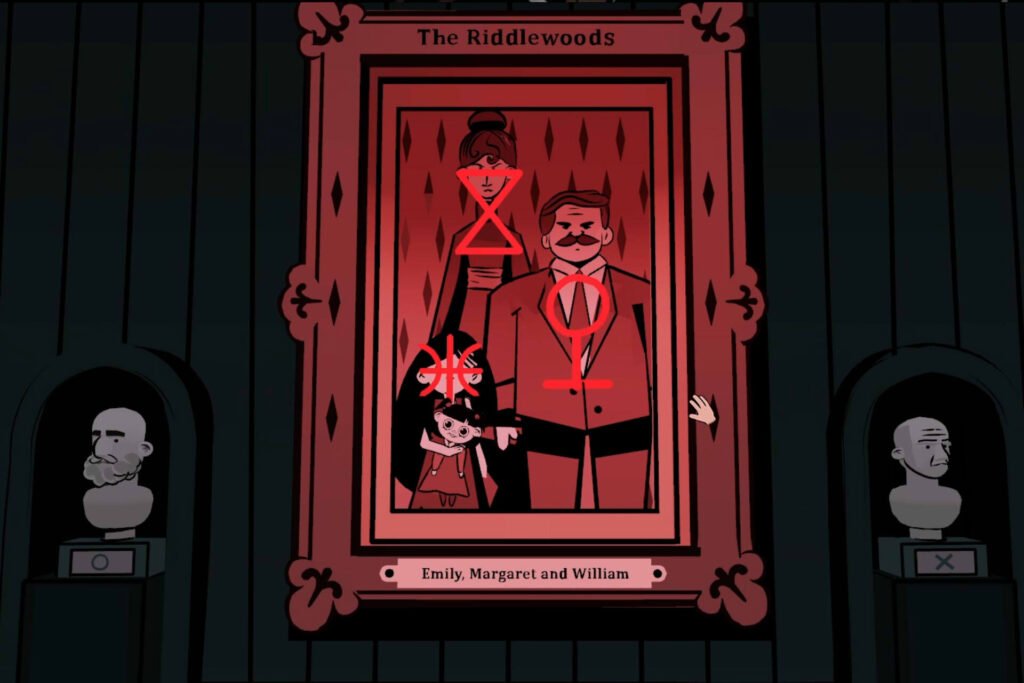
Let’s dive right into the most important part of any point-and-click title, the gameplay and puzzles. Thankfully, Riddlewood Manor nails these fundamentals with simple and intuitive controls, and plenty of objects that can be interacted with, picked up, combined, and used in different scenarios to help you solve each step of a puzzle and progress forward to the next room.
These puzzles pleasantly surprised me. They go beyond the classic “fetch an item and place it in the correct area” formula (of course, there is some of this, as you would expect, but it’s not repetitive or overbearing). Instead, many of the puzzles have very fun formulas that make them feel fresh and rewarding upon completion. One such highlight that stuck with me was a clever connect-four styled wine bottle puzzle that is used to unlock a hidden door – now that was some unexpected fun.
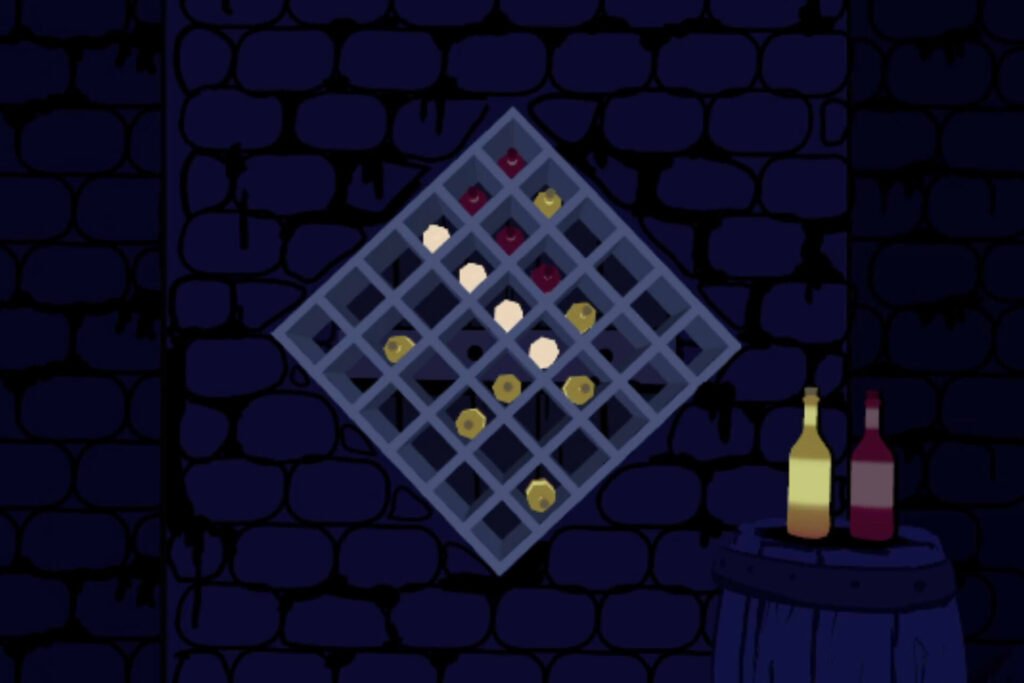
Without saying too much, there’s plenty more genuinely lovable puzzle moments, such as mastering the song on the piano for Mother, and participating in a very…interesting type of game show in the later stages of your playthrough.
There are also small, humorous touches to be found among each eerie corner of the mansion, such as the Haunting For Dummies book, which added some unexpected charm.

One of the more unique mechanics that adds some modern life into one of the most nostalgic game genres is the use of parallax movement. By moving your mouse slightly left or right, you can peek around corners and through doors to spot hidden details, such as being able to get a better view of the chicken sitting at the dining room table from the main foyer.
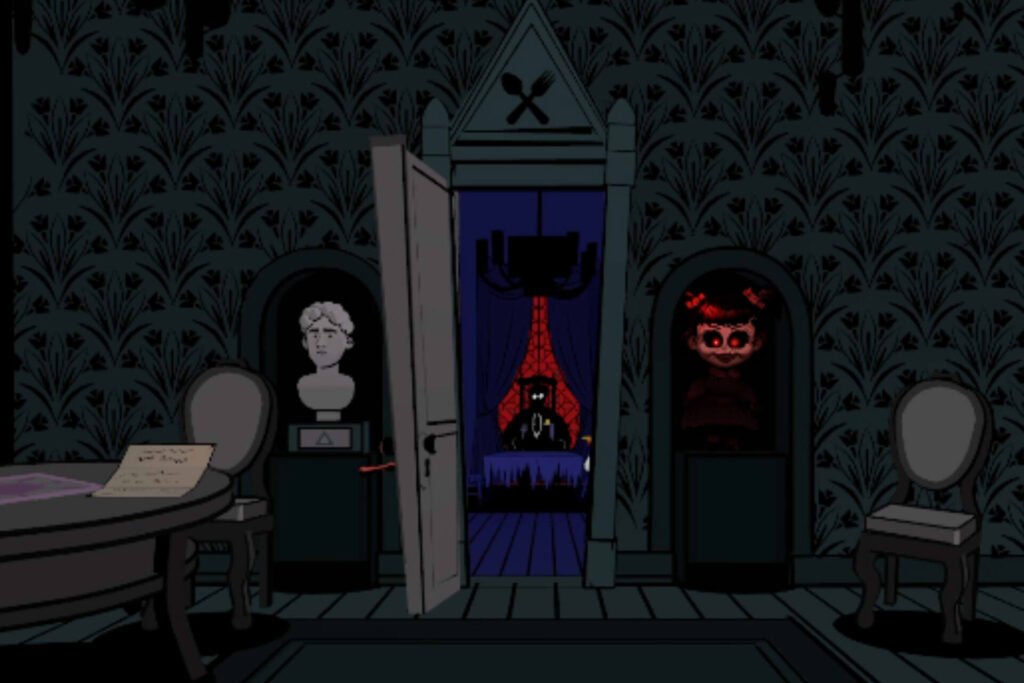
This doesn’t really have a massive effect on gameplay elements or puzzles, but it is really a nice little touch that makes the exploration feel much more immersive and helps add appreciation to the unique, lovely art style.
Story & Atmosphere – A Family With Dark History

The story kicks off with quite a simple angle. You appear to be linked to some holy religion/priest group, and are setting foot into Riddlewood Manor to cleanse it of darkness. However, upon entering, you soon find yourself uncovering an eerie mystery regarding the Riddlewood family. There are a few cliches here that the story leans into – ghostly whispers, hints of tragedy in the family, and, of course, a haunted doll.
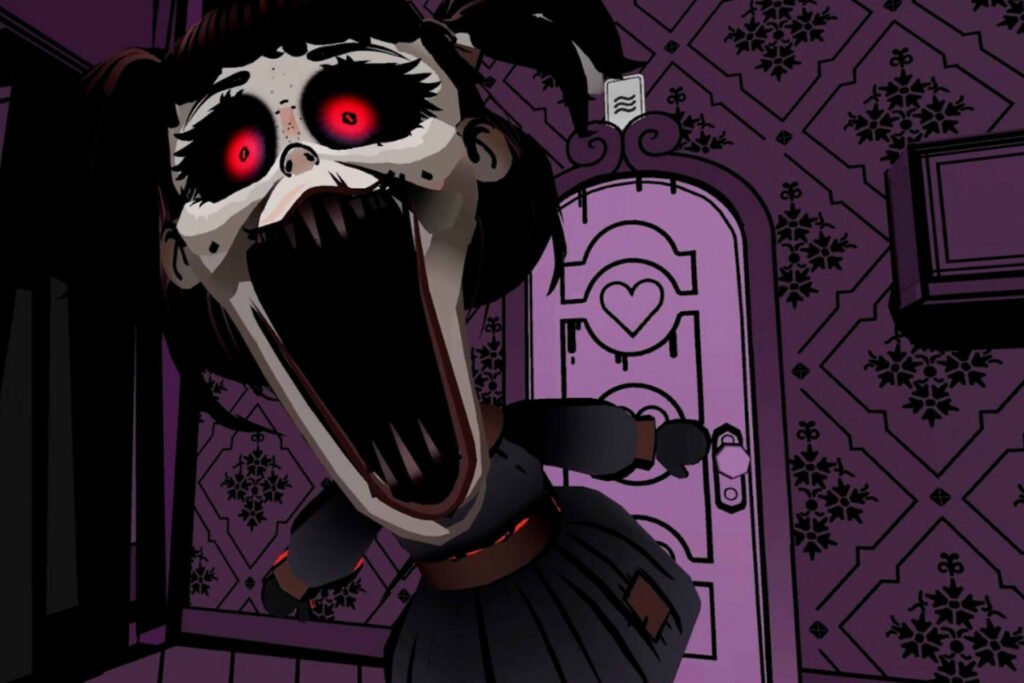
At first, it felt somewhat expected, but I was pleasantly surprised that as I made progress through each room, this seemingly cliche story evolved, taking more twisted, dark turns, and adding intrigue and emotional weight. There’s also an interesting revelation about the seemingly malevolent’ spirit, Suzie, that flips the script entirely, but I’ll leave the details regarding this a surprise.
Just when you think it’s all doom and gloom, though, Riddlewood Manor will throw in one of the more humorous moments I mentioned earlier, such as the existence of ‘The Duck King’, a deity of the highest power in this world. This caught me off guard quite a bit, but did give me a slight chuckle in an otherwise quite grim setting. The fact that the game is able to balance the gloomy horror elements with quirky, silly little elements such as results in quite a fun mix, giving a moment of fresh air between all of the darker, more serious notes.
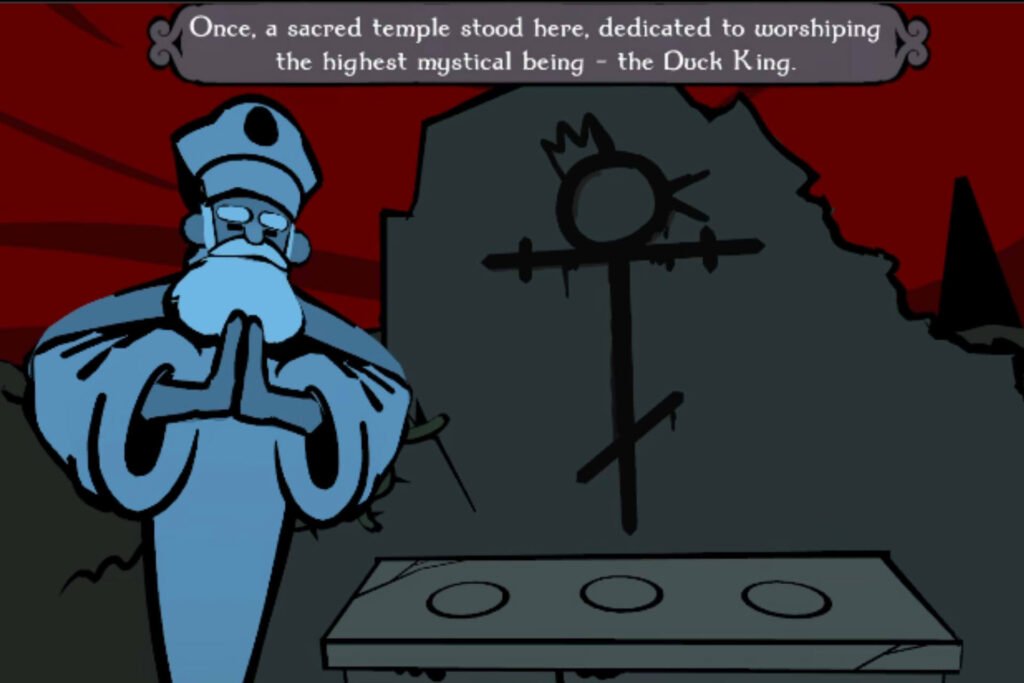
One of the most engaging gameplay mechanics in Riddlewood Manor is how death is handled. There are many, many ways to die throughout your investigation. However, rather than a nuisance, each one feels like a strange, amusing little reward. You may find yourself abducted by aliens, eaten by basement-dwelling monstrosities, or blown up while trying to perform chores for the ghostly parental figures. Some deaths lean into classic accidents or horror cliches, and others are absolutely absurd.

Many of these deaths are tied to Achievements, too, which is quite a clever design choice, turning your ‘failures’ into a discovery or success. I found myself genuinely amused each time I stumbled into one of these ridiculous death scenarios. Any game that can make dying feel entertaining rather than frustrating? I absolutely must commend.
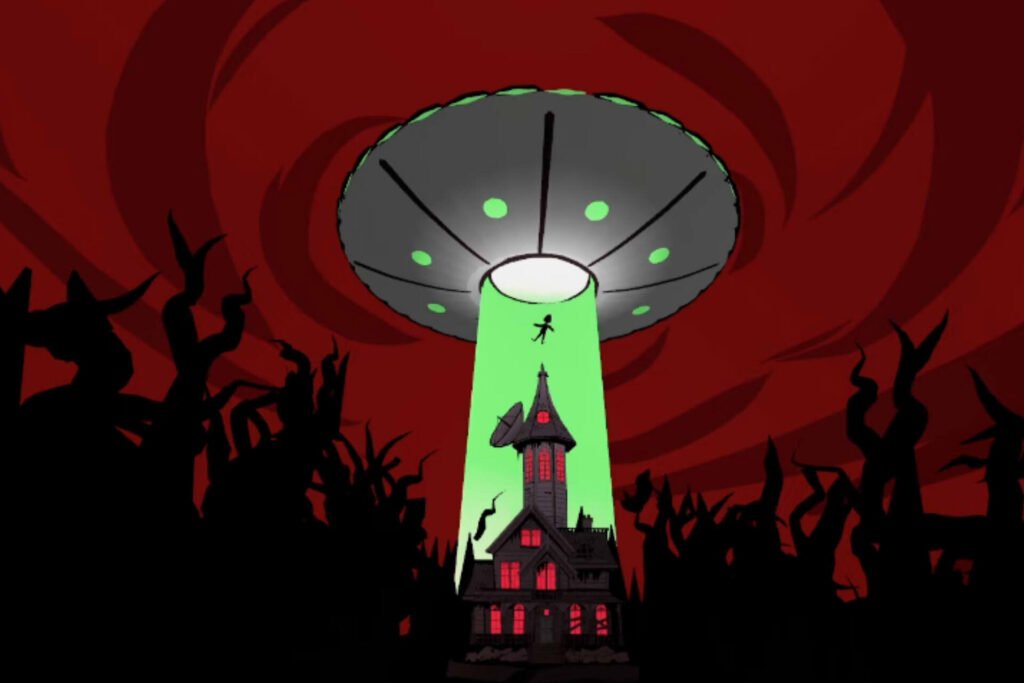
Oddly enough, throughout the story, you are partially assisted by a small dragon – a gift from one of the three holy characters at the very beginning of the game. This is a rather curious choice for a horror game. It may add a whimsical touch, but I must admit the dragon does feel out of place.

The aliens, ghosts, and monster-like creatures within the manor, I understand, as the grounds are supposedly cursed. However, a dragon seems to create a strange, fantasy-like overlap that may not have been necessary. I could have just as easily seen an owl or raven in its place, as they could also hatch from the egg you are given, and would also fit the dark, gothic-like atmosphere on a much better level.
Gameplay Progression / Respawn Mechanics – A Loop of Life & Death

After some major milestones in Riddlewood Manor, such as completing the Dungeon room, players will respawn. Usually, upon death, you can choose the room that you can respawn into, letting you go back and pick up any missing items, explore other areas, or start again from the room before your respawn.
However, in the instance of the Dungeon, you respawn in the forest clearing where you first start the game. At first, I found this rather jarring, and it somewhat broke the immersion of being “trapped” inside the manor. After all, the ghosts all tend to warn you “once you enter, you cannot leave”, and that there is only one way out… death.

Because of this, I was a little unsure of this approach, as even ‘death’ doesn’t seem to give you a way out of here. Instead, you just simply respawn, as if stuck in some strange life-death limbo. I was honestly very much on the fence regarding if this works in favor or detriment to the story.
However, there is a solid gameplay reason for the way respawns work. As it turns out, certain items are tied to Achievements and can be missed. When you die in-game, you lose all your items and must collect them again. There is an item tied to an achievement late in the game within this initial area, so I do understand the need to be able to go back for it (or to other rooms for the same purpose later).
Despite this, I still feel as if there was lost potential to implement some stronger environmental storytelling. For instance, if the holy characters who originally greeted you at the start were now missing on later returns, it would truly give a sense of time passing, of progression, and of the many ‘deaths’ you have faced in this loop.
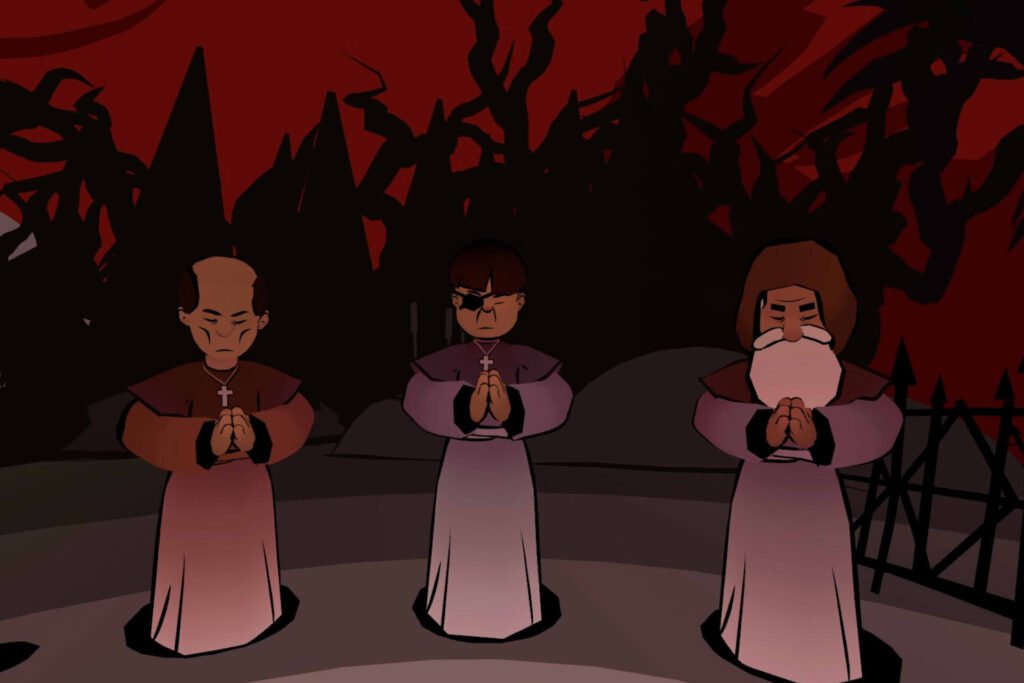
Seeking out new environmental changes would truly make each respawn feel meaningful on every level, rather than repetitive, or simply to serve the purpose of item-collecting and Achievements. It’s a small gripe, but I do feel it was somewhat of a lost opportunity to truly elevate the experience to new heights.
Horror Elements & Jumpscares Beware!

Riddlewood Manor absolutely utilizes classic horror elements and mechanics, yet it doesn’t rely on them alone to unsettle players. Personally, I found the ‘jumpscares’ to be more atmospheric than adrenaline-pumping, though this may be because I could not stop admiring the gorgeous animations and creative art style etched into each and every one of them. I found them to be mild, not necessarily frightening, but still very effective and fun.
Despite leaning more ‘spooky’ than ‘scary’, I believe Riddlewood Manor’s jumpscares serve their purpose beautifully. Each one feels placed with thoughtful, and sometimes funny, intentions. I mean, who expects a ghost to just pop right out of a toilet?
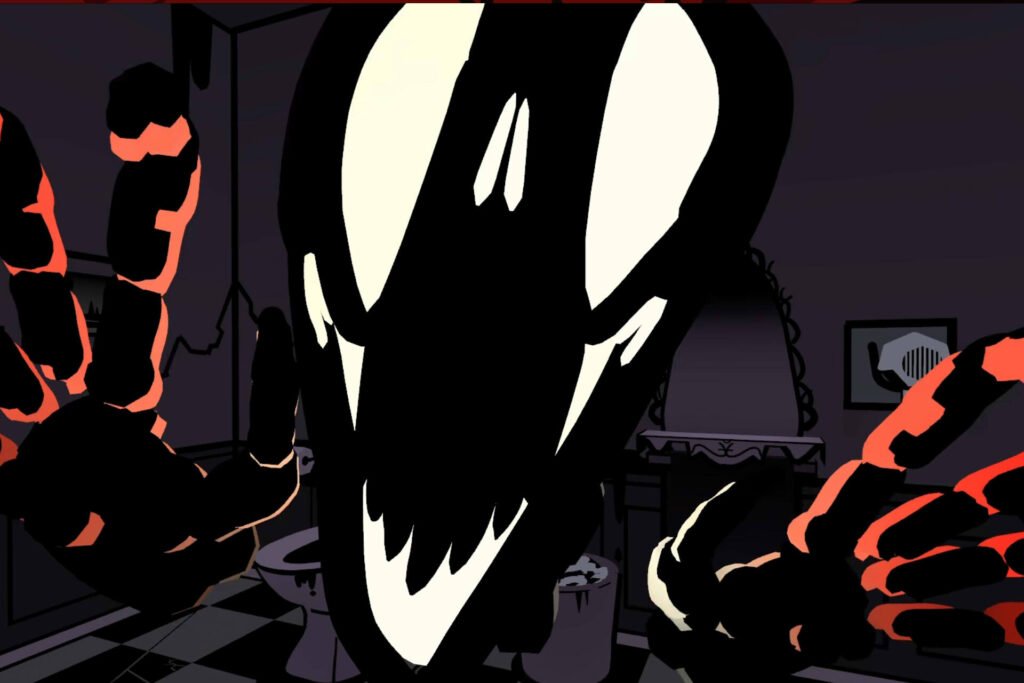
A particularly thoughtful touch is the option to turn on jumpscare warnings in the settings menu. Players who prefer to avoid surprise spooks but are still eager to explore the manor can enjoy the experience just as anyone else. It’s a small addition, but incredibly considerate for player comfort and accessibility, proving that horror can be scaled to preference and doesn’t need to be overwhelming or punishing to be effective.
Visuals, Art, & SFX – Hand-Crafted Horror Like a Story Book of Shadows
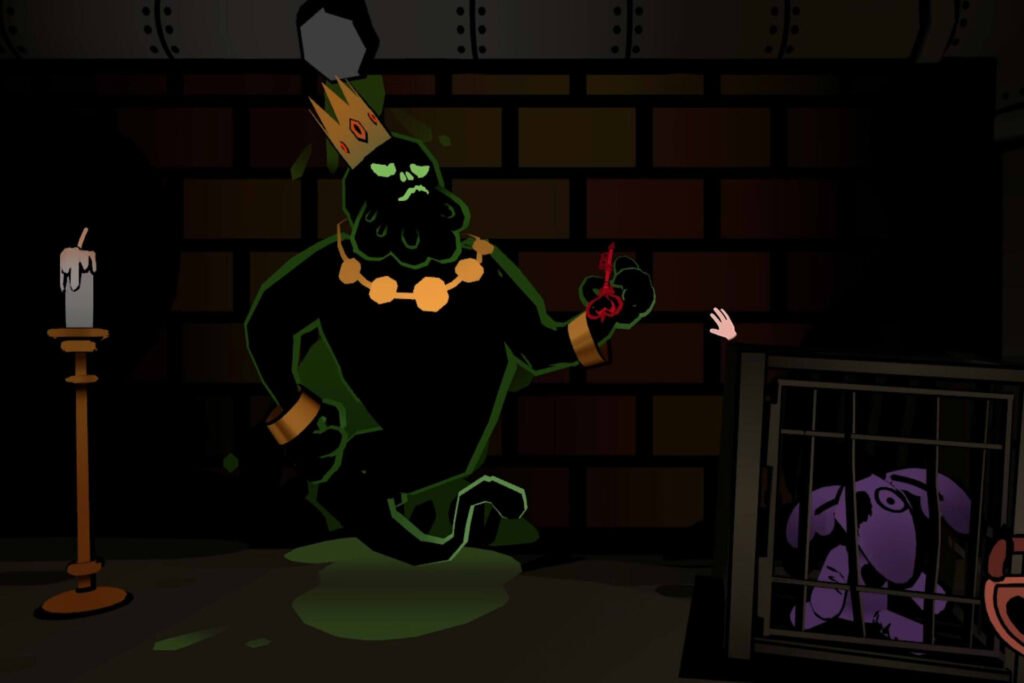
I’ve already mentioned the art more than once throughout this review, but Riddlewood Manor truly nails that ‘simple, yet stunning’ approach. The 2D, hand-drawn art is bold and distinctive, perfectly mixing dark horror tones with pops of vibrant color accents that make every single scene and room stand out. The heavy black linework and varying line weights in each illustrated prop, object, or character give a fun sense of stylization, making you feel like you are truly stepping into a twisted storybook.
Every room is packed full of atmosphere and intricate details, inviting players to take their time and interact with the environment. Despite having such a dark subject matter, the clever use of color palettes somehow manage to make Riddlewood Manor feel threatening, yet bright and inviting all at once. The animations are absolutely gorgeous, and are such a treat to watch. I genuinely found myself replaying eligible ones multiple times simply to admire the artistry on display.

Sound design ties all of this beauty together. Subtle ambiance such as creaks, whispers, and echoes build tension without being overwhelming. This restraint enables the horror to creep in slowly, building with the story to keep yourself invested, rather than jumping out at you and risk going too over-the-top.
Riddlewood Manor – Final Thoughts

Riddlewood Manor is the kind of indie horror that sticks with you as memorable, not because it is terrifying, but rather because it is captivating. It doesn’t rely on heavy jump scares or grotesque gore to hook you in. Instead, it builds tension through the art, mood, and subtle, unnerving details.
You’ll notice things such as a pig’s head fixed with a disturbingly sinister smile, or concerning behaviors in the different ghostly personalities you run into along the way. It’s less terror and more creepy candle-lit spooky story, a different kind of horror that fans of the genre are still sure to love.

There’s a combination of clever puzzles, a beautiful artistic direction, and a story that gradually darkens and twists to create a deeply unsettling and satisfying experience.
Riddlewood Manor is the type of game that can be played through entirely in just one sitting, taking anywhere from about 3 hours to 8 hours, depending on how thoroughly you investigate everything (or in my case, how long I spend admiring the visuals).

Furthermore, the devs did a wonderful job in pepping release in time for the second half of October 2025, making it a standout title to play across the Spooky Season. Of course, it’s the type of game that provides a solid little horror tale at any given time, as long as you’re in the mood.
If you’re craving a game that is spooky but not overwhelming, then Riddlewood Manor is a strong contender. Every puzzle solved feels like you’re peeling back another layer of an increasingly disturbing mystery, and it’s clear that a lot of heart went into production.
Remember, gamers…There’s only one way out.
Riddlewood Manor: The kind of indie horror that sticks with you as memorable, not because it is terrifying, but rather because it is captivating. It doesn't rely on heavy jump scares or grotesque gore to hook you in. Instead, it builds tension through the art, mood, and subtle, unnerving details. There's a combination of clever puzzles, a beautiful artistic direction, and a story that gradually darkens and twists to create a deeply unsettling and satisfying experience. If you're craving a game that is spooky but not overwhelming, then Riddlewood Manor is a strong contender. Despite a few immersion-breaking scenarios and seemingly out-of-place critters, every puzzle solved feels like you're peeling back another layer of an increasingly disturbing mystery, and it's clear that a lot of heart went into production. – Grace Black
